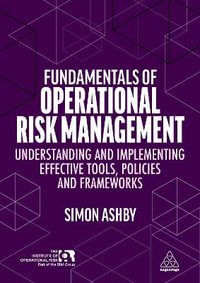| Dedication | p. v |
| Preface | p. vii |
| Introduction | p. ix |
| Claims Reserving and Pricing with Run-Off Triangles | p. 1 |
| The evolving nature of claims and reserves | p. 1 |
| Chain ladder methods | p. 4 |
| Basic chain ladder method | p. 5 |
| Inflation-adjusted chain ladder method | p. 8 |
| The average cost per claim method | p. 11 |
| The Bornhuetter-Ferguson or loss ratio method | p. 14 |
| An example in pricing products | p. 19 |
| Statistical modeling and the separation technique | p. 26 |
| Problems | p. 27 |
| Loss Distributions | p. 35 |
| Introduction to loss distributions | p. 35 |
| Classical loss distributions | p. 36 |
| Exponential distribution | p. 36 |
| Pareto distribution | p. 39 |
| Gamma distribution | p. 43 |
| Weibull distribution | p. 45 |
| Lognormal distribution | p. 47 |
| Fitting loss distributions | p. 51 |
| Kolmogorov-Smirnoff test | p. 52 |
| Chi-square goodness-of-fit tests | p. 54 |
| Akaike information criteria | p. 58 |
| Mixture distributions | p. 58 |
| Loss distributions and reinsurance | p. 61 |
| Proportional reinsurance | p. 62 |
| Excess of loss reinsurance | p. 62 |
| Problems | p. 68 |
| Risk Theory | p. 77 |
| Risk models for aggregate claims | p. 77 |
| Collective risk models | p. 78 |
| Basic properties of compound distributions | p. 79 |
| Compound Poisson, binomial and negative binomial distributions | p. 79 |
| Sums of compound Poisson distributions | p. 85 |
| Exact expressions for the distribution of S | p. 87 |
| Approximations for the distribution of S | p. 92 |
| Individual risk models for S | p. 94 |
| Basic properties of the individual risk model | p. 95 |
| Compound binomial distributions and individual risk models | p. 97 |
| Compound Poisson approximations for individual risk models | p. 98 |
| Premiums and reserves for aggregate claims | p. 99 |
| Determining premiums for aggregate claims | p. 99 |
| Setting aside reserves for aggregate claims | p. 103 |
| Reinsurance for aggregate claims | p. 107 |
| Proportional reinsurance | p. 109 |
| Excess of loss reinsurance | p. 111 |
| Stop-loss reinsurance | p. 116 |
| Problems | p. 120 |
| Ruin Theory | p. 129 |
| The probability of ruin in a surplus process | p. 129 |
| Surplus and aggregate claims processes | p. 129 |
| Probability of ruin in discrete time | p. 132 |
| Poisson surplus processes | p. 132 |
| Probability of ruin and the adjustment coefficient | p. 134 |
| The adjustment equation | p. 135 |
| Lundberg's bound on the probability of ruin [psi] (U) | p. 138 |
| The probability of ruin when claims are exponentially distributed | p. 140 |
| Reinsurance and the probability of ruin | p. 146 |
| Adjustment coefficients and proportional reinsurance | p. 147 |
| Adjustment coefficients and excess of loss reinsurance | p. 149 |
| Problems | p. 152 |
| Credibility Theory | p. 159 |
| Introduction to credibility estimates | p. 159 |
| Classical credibility theory | p. 161 |
| Full credibility | p. 161 |
| Partial credibility | p. 163 |
| The Bayesian approach to credibility theory | p. 164 |
| Bayesian credibility | p. 164 |
| Greatest accuracy credibility theory | p. 170 |
| Bayes and linear estimates of the posterior mean | p. 172 |
| Predictive distribution for X[subscript n+] 1 | p. 175 |
| Empirical Bayes approach to credibility theory | p. 176 |
| Empirical Bayes credibility - Model 1 | p. 177 |
| Empirical Bayes credibility - Model 2 | p. 180 |
| Problems | p. 183 |
| No Claim Discounting in Motor Insurance | p. 191 |
| Introduction to No Claim Discount schemes | p. 191 |
| Transition in a No Claim Discount system | p. 193 |
| Discount classes and movement in NCD schemes | p. 193 |
| One-step transition probabilities in NCD schemes | p. 195 |
| Limiting distributions and stability in NCD models | p. 198 |
| Propensity to make a claim in NCD schemes | p. 204 |
| Thresholds for claims when an accident occurs | p. 205 |
| The claims rate process in an NCD system | p. 208 |
| Reducing heterogeneity with NCD schemes | p. 212 |
| Problems | p. 214 |
| Generalized Linear Models | p. 221 |
| Introduction to linear and generalized linear models | p. 221 |
| Multiple linear regression and the normal model | p. 225 |
| The structure of generalized linear models | p. 230 |
| Exponential families | p. 232 |
| Link functions and linear predictors | p. 236 |
| Factors and covariates | p. 238 |
| Interactions | p. 238 |
| Minimally sufficient statistics | p. 244 |
| Model selection and deviance | p. 245 |
| Deviance and the saturated model | p. 245 |
| Comparing models with deviance | p. 248 |
| Residual analysis for generalized linear models | p. 252 |
| Problems | p. 258 |
| Decision and Game Theory | p. 265 |
| Introduction | p. 265 |
| Game theory | p. 267 |
| Zero-sum two-person games | p. 268 |
| Minimax and saddle point strategies | p. 270 |
| Randomized strategies | p. 273 |
| The Prisoner's Dilemma and Nash equilibrium in variable-sum games | p. 278 |
| Decision making and risk | p. 280 |
| The minimax criterion | p. 283 |
| The Bayes criterion | p. 283 |
| Utility and expected monetary gain | p. 288 |
| Rewards, prospects and utility | p. 290 |
| Utility and insurance | p. 292 |
| Problems | p. 295 |
| References | p. 304 |
| Basic Probability Distributions | p. 309 |
| Some Basic Tools in Probability and Statistics | p. 313 |
| Moment generating functions | p. 313 |
| Convolutions of random variables | p. 316 |
| Conditional probability and distributions | p. 317 |
| The double expectation theorem and E(X) | p. 319 |
| The random variable V(X/Y) | p. 322 |
| Maximum likelihood estimation | p. 324 |
| An Introduction to Bayesian Statistics | p. 327 |
| Bayesian statistics | p. 327 |
| Conjugate families | p. 328 |
| Loss functions and Bayesian inference | p. 329 |
| Answers to Selected Problems | p. 335 |
| Claims reserving and pricing with run-off triangles | p. 335 |
| Loss distributions | p. 335 |
| Risk theory | p. 337 |
| Ruin theory | p. 338 |
| Credibility theory | p. 338 |
| No claim discounting in motor insurance | p. 340 |
| Generalized linear models | p. 340 |
| Decision and game theory | p. 341 |
| Index | p. 345 |
| Table of Contents provided by Ingram. All Rights Reserved. |
























